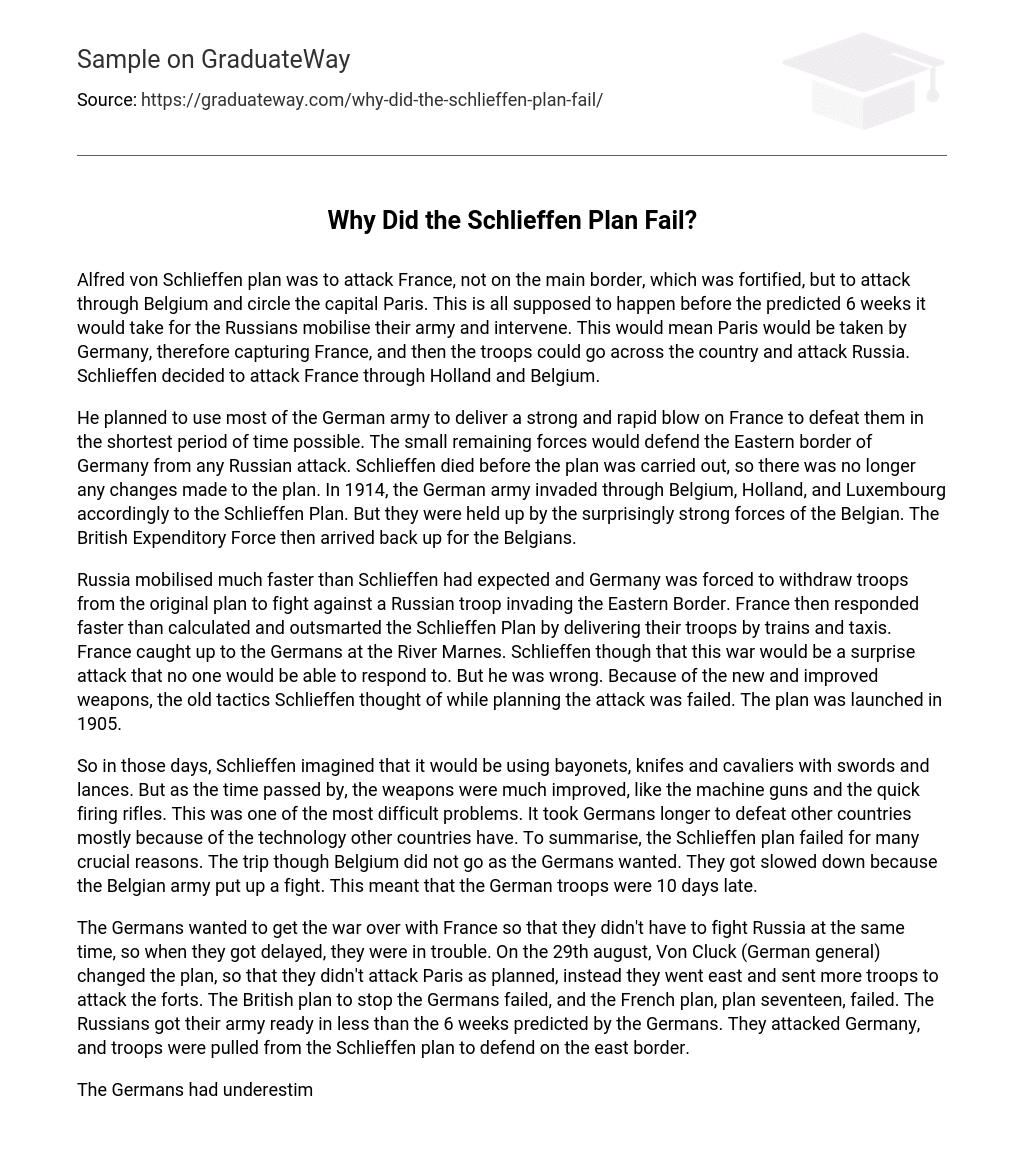The objective of Alfred von Schlieffen’s plan was to conquer France by avoiding their heavily fortified main border. Instead, the plan involved attacking through Belgium and encircling the capital city of Paris. The goal was to accomplish this before the predicted 6-week timeframe in which the Russian army could mobilize and intervene. The successful capture of Paris by Germany would result in the conquest of France, allowing German troops to subsequently proceed across the country and launch an attack on Russia. Therefore, Schlieffen made the strategic decision to invade France via Holland and Belgium.
He intended to utilize the majority of the German army to launch a forceful and swift attack on France with the objective of defeating them as quickly as possible. The remaining smaller forces would be responsible for protecting Germany’s Eastern border from potential Russian aggression. Schlieffen passed away before the plan could be executed, thus no modifications were made to the plan. In 1914, the German army implemented the Schlieffen Plan, invading through Belgium, Holland, and Luxembourg. However, they encountered formidable resistance from the Belgian forces, which caused a delay. Ultimately, the British Expeditionary Force came to support the Belgians.
Russia mobilized more quickly than Schlieffen had anticipated, leading Germany to divert troops from their original plan of combating a Russian invasion on the Eastern Border. France, in turn, reacted faster than expected and outmaneuvered the Schlieffen Plan by utilizing trains and taxis to deploy their troops. France caught up with the German forces at the River Marne. Schlieffen had anticipated that this war would be an unexpected attack, catching everyone off guard, but he was mistaken. The introduction of advanced weaponry rendered the old tactics envisioned by Schlieffen ineffective during the planning stages of the attack. The plan was put into action in 1905.
In those days, Schlieffen envisioned using bayonets, knives, and cavaliers equipped with swords and lances. However, over time, advancements in weapons such as machine guns and quick firing rifles greatly improved. This technological disadvantage led to Germans taking longer to defeat other countries. Ultimately, the Schlieffen plan failed due to various critical reasons. The German troops faced delays as their journey through Belgium did not go as anticipated. The Belgian army resisted, causing a significant slowdown and resulting in the German troops being delayed by 10 days.
The Germans aimed to quickly end the war against France in order to avoid simultaneous conflict with Russia. However, their delayed progress led to a troublesome situation. On August 29th, German general Von Cluck altered the original plan and decided against attacking Paris as initially intended. Instead, they shifted their focus eastward and dispatched additional troops to assault the forts. The British’s attempt to impede the Germans proved unsuccessful, along with the French’s plan seventeen. Contrary to the Germans’ six-week prediction, the Russians swiftly prepared their army and launched an attack on Germany. As a result, troops from the Schlieffen plan were reassigned to defend the eastern border.
The power of France was underestimated by the Germans, leading to a stalemate between the two armies. As a result, trenches were dug and war persisted for four years instead of the intended six weeks. Even if France had been defeated within the planned timeframe, Germany would have still faced an attack from Russia, making victory unlikely. The failure of the Schlieffen plan can be attributed to multiple factors, including unexpected resistance from Belgium, faster than anticipated mobilization by the Russians, and necessary plan alterations. Additionally, Germany’s army lacked sufficient strength.





